| Type: | Beach Flag |
|---|---|
| Flag & Banner Material: | Polyester |
| Shape: | Customized |
| Samples: |
cotton canvas
|
|---|
| Customization: |
|---|
|
Shipping Cost:
Estimated freight per unit. |
about shipping cost and estimated delivery time. |
|---|
| Payment Method: |
|
|---|---|
| Initial Payment Full Payment |
| Currency: | US$ |
|---|
| Return&refunds: | You can apply for a refund up to 30 days after receipt of the products. |
|---|
Suppliers with verified business licenses
 Audited Supplier
Audited Supplier | CODE | WEIGHT | WIDTH |
| RJPDS001 | 90gsm | 0.914/1.2/1.3/1.52/1.60m |
| RJPDS002 | 110gsm | 0.914/1.2/1.3/1.52/1.60m |







 .FAQ:
.FAQ:




Suppliers with verified business licenses
 Audited Supplier
Audited Supplier